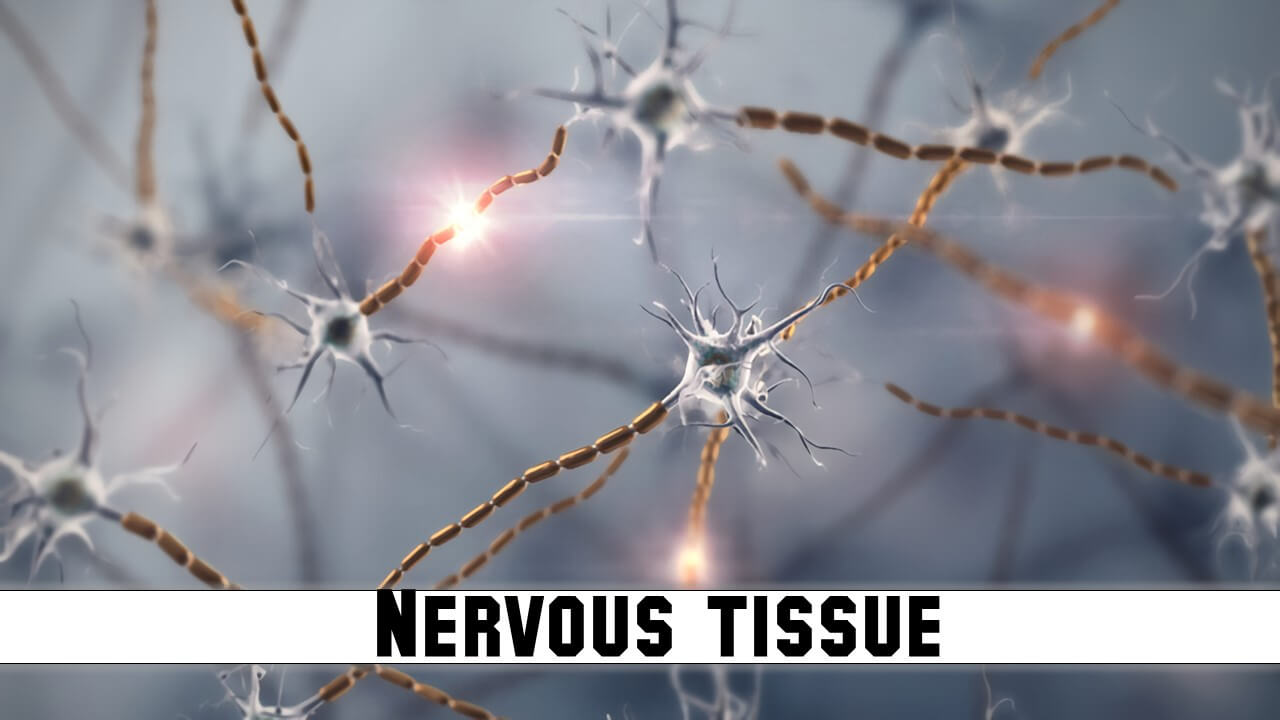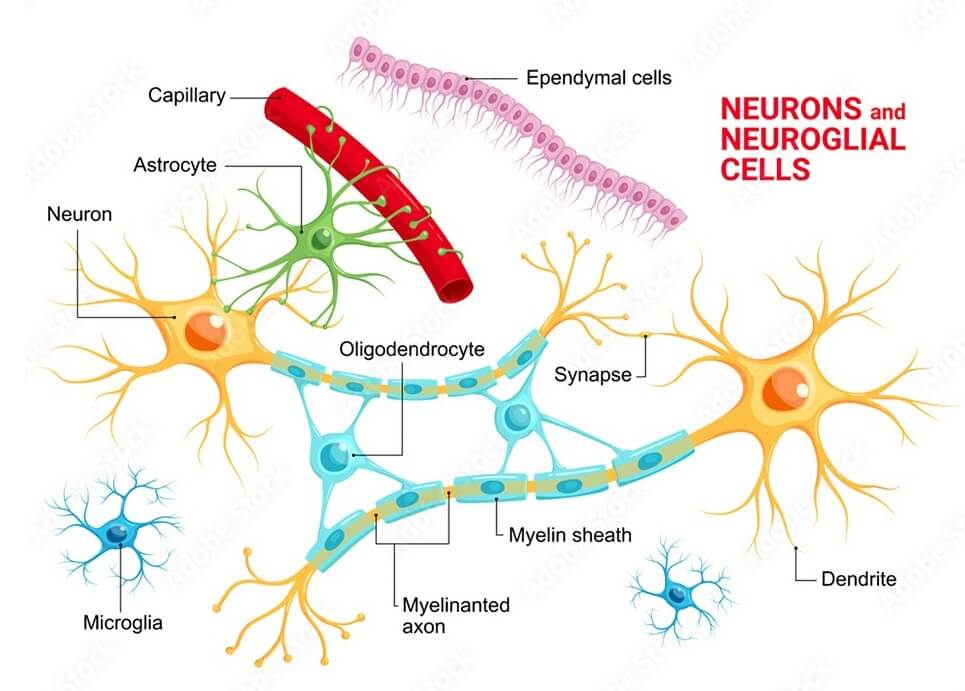Table of Contents
Nervous tissue: Structure, Types and Function
In this article we will discuss about the Nervous tissue: – Definition, Structure, Types of Neuron, Classification of nervous tissue and Functions
Nervous tissue
- Nervous tissue are highly specialised to transmitting the stimulus very rapidly from one place to another within the body
- Nerve tissue is the main tissue of our nervous system
Structure of Nervous Tissue
- Nervous tissue consists of two cells: nerve cells or neurons and Neuroglia (glial cell)
Neuron
- They vary in shape and size, all neurons contains three parts- cell body, dendrites and axon
- Cell body which contains the nucleus, cytoplasm and cell organelles
- Dendrite is a highly branched cytoplasmic extension, responsible for receiving impulses
- from outside & pass to the cyton
- Axons are long stem-like projections emerging out of the cell, It conduct nerve impulse away from cell body
Neuroglia
- Glial cells are non conducting cells that protect and nurture as well as support cells of nervous tissue.
Types of Neurons
Unipolar
- Single process arises from cyton (1 Axon)
- E.g. Nervous system of embryo
Bipolar
- Two process arise from cyton (1 Axon and 1 dendron)
- E.g. Retina (Rod and cones) olfactory epithelium
Multipolar
- Neuron which one axon but many dendrons
- E.g. Most of neurons of vertebrates
Nonpolar Neuron
- No definite dendron/axon
- Cell process are either absent or if present are not differentiated in axon and dendrons
- Nerve impulse radiates in all directions
- E.g. Hydra, Amacrine cell of Retina
Pseudounipolar
- In this type, nerve cell has only axon but a small process develop from axon which act as dendron
- E.g. Dorsal root ganglia of spinal cord
Classification of Nervous System
- The nervous system is classified into the central, peripheral and autonomic nervous systems
Central Nervous System
- Central Nervous System is often called the central processing unit of the body
- It consists of the brain and the spinal cord
Brain
- The brain is one of the important, largest and central organ of the human nervous system.
- Brain control unit of the nervous system, which helps us in discovering new things, remembering and understanding, making decisions, and a lot more
- It is enclosed within the skull
- The human brain is composed of three major parts:
- Forebrain: The anterior part of the brain, consists of Cerebrum, Hypothalamus and Thalamus.
- Midbrain: The smaller and central part of the brainstem, consists of Tectum and Tegmentum.
- Hindbrain: The central region of the brain, composed of Cerebellum, Medulla and Pons.
Spinal Cord
- The spinal cord is a cylindrical bundle of nerve fibers and associated tissues enclosed within the spine and connect all parts of the body to the brain
- It begins in continuation with the medulla and extends downwards
- It is enclosed in a bony cage called vertebral column and surrounded by membranes called meninges
- The spinal cord is concerned with spinal reflex actions and the conduction of nerve impulses to and from the brain
Peripheral Nervous System
- Peripheral Nervous System is the lateral part of the nervous system that develops from the central nervous system
- PNS includes two types of nerve fibers
- Afferent nerve fibers – These are responsible for transmitting messages from tissues and organs to the CNS.
- Efferent nerve-fibers – These are responsible for conveying messages from CNS to the corresponding peripheral organ
Autonomic neural system
- The autonomic neural system is involved in involuntary actions like regulation of physiological functions (digestion, respiration, salivation, etc.).
- It is a self-regulating system which conveys the impulses from the CNS to the smooth muscles and involuntary organs (heart, bladder and pupil)
- The autonomic neural system can be further divided into:
- Sympathetic nervous system
- Parasympathetic nervous system
Functions of the Nervous System
- The master controlling and communicating system of the body
- Sensory input: detects external and internal stimuli
- Integration: processes and responds to sensory input
- Control of Muscles and Glands
- Homeostasis is maintained by regulating other systems
- Center for Mental Activities
Frequently Asked Questions: –
Where is nervous tissue found?
Nervous tissue mainly found in brain, spinal cord and nerves. Neevous tissue controlling and communicating system of the body
What is nervous tissue composed of?
Nervous tissue coomposed of two cells: nerve cells or neurons and Neuroglia (glial cell). Nerve cells conduct nerve impulse Glial cells are non conducting cells that protect and nurture as well as support nerve cells.
What is the function of nervous tissue?
Nervous tissue is responsible for co-ordinating and controlling boday activites. It is center for mental activities.
You may also like: –
- Epithelial Tissue: Definition, Characteristics and Functions
- Connective tissue: Definition, Structure, Types and Function
- Muscle Tissue: Characteristics, Structure, Types and Function
For more detailed information about Structural Organisation in Animals, download now full study material as PDF and if you want to learn more detailed information about Structural Organisation in Animals, visit YouTube Channel.




![[PPT] The living world Class 11 Notes](https://rajusbiology.com/wp-content/uploads/2024/06/PPT-The-living-world-Class-11-Notes-300x169.webp)
